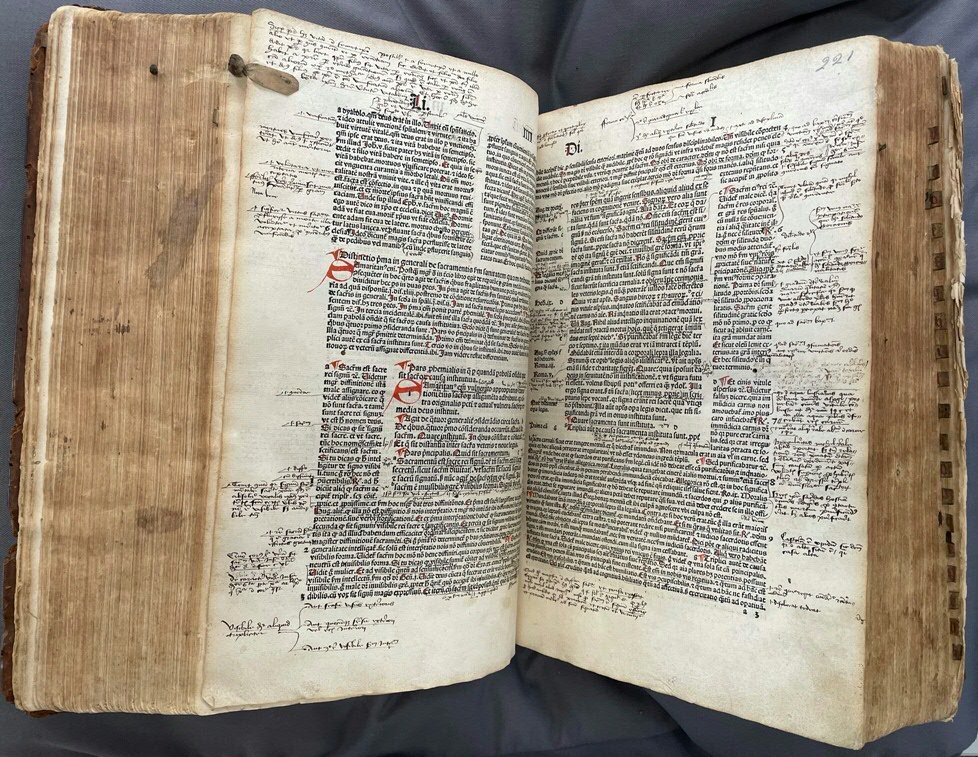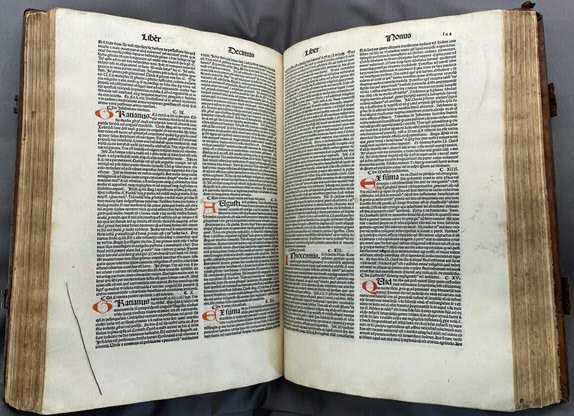Convenient conventions
Conventions evolve, not just in terms of producing books, but also with regard to what readers do with (and to) their books. The blank space in the margins and between the lines provides ample opportunity to interact with the text by writing, scribbling and drawing. Some of these conventions have become obsolete, but others still continue into the present day. How did readers take notes or mark important passages in the fifteenth century?
Helping hands
One charming convention that is now lost is that of maniculae: drawings of small hands with the index finger pointing to a particular passage (the Latin word manicula means ‘little hand’). With a manicule, the reader could literally point out which elements they considered important. While their use was widespread, there was no prescribed format and manicules therefore come in a wide variety of forms. They may be stylized or realistic. Some are chubby, others long and elegant, and some even include an entire arm or sleeve.
Scribbling and doodling
Books can be used for a range of purposes other than reading. One that certainly has not changed and probably never will is that of scribbling and doodling. Even in fifteenth-century books we find drawings of cartoonish figures or abstract shapes. Some book users meticulously copied details from images, whereas others carelessly scrawled several lines and shapes.
Bookmarks
Finding one’s way through a book could be challenging, especially in the case of a large book with many pages. To help the fifteenth-century reader, several incunabula in the collection have small bookmarks and page tabs on a number of leaves, indicating the start of chapters or important passages. These tabs are most commonly made of red leather strips, folded double over the edge of a leaf. However, in some cases, these strips have been cut from illuminated manuscripts so that the colourful floral motifs form decorative bookmarks in the incunabula. This way of reusing manuscripts was not uncommon as an economical way to repurpose books that were no longer in use.












